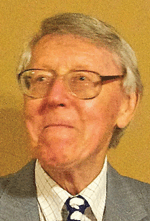Mapping geology beneath volcanics using magnetic data
Irena Kivior A C , Stephen Markham A , Leslie Mellon A and David Boyd BA Archimedes Consulting, 21 Stirling St. Thebarton, SA 5031, Australia.
B University of Adelaide, North Terrace, Adelaide, SA 5001, Australia.
C Corresponding author. Email: ikivior@archimedes-consulting.com.au
The APPEA Journal 58(2) 821-824 https://doi.org/10.1071/AJ17205
Accepted: 13 March 2018 Published: 28 May 2018
Abstract
Volcanic layers within sedimentary basins cause significant problems for petroleum exploration because the attenuation of the seismic signal masks the underlying geology.
A test study was conducted for the South Australia Government to map the thickness of volcanics and sub-volcanic geology over a large area in the Gawler Range Volcanics province. The area is covered by good quality magnetic data. The thickness of volcanics and basement configuration was unknown as there has only been a limited amount of drilling.
The Automatic Curve Matching (ACM) method was applied to located magnetic data and detected magnetic sources within different rock units, providing their depth, location, geometry and magnetic susceptibility. The magnetic susceptibilities detected by ACM allowed the differentiation of the volcanics and the underlying basement. The base of volcanics and the depth to the top of basement was mapped along 75 km NS profiles, that were spaced 1 km apart over a distance of 220 km. The volcanic and basement magnetic susceptibilities and the magnetic source distribution pattern were used as key determinants to interpret the depth to the two interfaces. The results for each interface were gridded, and images of the base of volcanics and depth to basement were generated.
The mapped volcanics thickness was validated by comparison with the results from drilling, with the volcanics thickness matching very well. After project completion, a passive seismic survey was conducted in part of the test area, indicating a base of volcanics of ~4 km, which further confirmed the results.
Keywords: computation of magnetic susceptibility, magnetic data interpretation, sub-volcanic mapping.

Irena Kivior obtained her Eng. M.Sc. degree in Geology from the Academy of Mines and Metallurgy in Cracow, Poland, and her Ph.D. in Geophysics from the University of Adelaide, where she conducted deep crust Post-Doctorate research (1996–1998) using potential field data. In 1997, she founded Archimedes, a company providing geophysical services for the petroleum industry worldwide using proprietary techniques. Irena was appointed Visiting Research Fellow at the Australian School of Petroleum, University of Adelaide (1998–2003). Irena is a member of AAPG, EAGE and SEG. |

Stephen Markham graduated from the Flinders University, Australia and completed a M.Sc. degree in Geophysics in 1997. At the University of Adelaide he conducted extensive research on the application of high-resolution magnetic data over the Otway Basin in the South Australia. Since 1997, he has worked for Archimedes first as a Senior Geophysicist and now as Chief Geophysicist, mainly in special processing, analysis and interpretation of the high-resolution aeromagnetic, gravity and gravity gradiometry data. |

Leslie Mellon graduated from the University of South Australia with a B.Sc. Major in Geology and Minor in Hydrology. She has worked previously as Production Mine Geologist in the in-situ leaching uranium industry and as Contract Exploration Geologist. Within Archimedes, Ms Mellon is employed as a Geologist and performs interpretation of potential field data. |

Professor David Boyd was chief geophysicist for Hunting Geophysics in London for 15 years. From 1969 until 1991 he was Professor of Geophysics at the University of Adelaide and was Emeritus Professor of Geophysics. He was involved in hydrocarbon exploration in Europe, Africa, Southern Asia and Australia for more than 50 years. Professor Boyd passed away in late 2016. |
References
Kivior, I., Markham, S., Warner, D., and Mellon, L. (2015). Mapping Horizons and Fracture Patterns in Coal Measures Using Magnetics for Coalbed Methane Exploration in Queensland. In ‘APPEA Conference & Exhibition, Melbourne, Australia, 17–20 May 2015’.Kivior, I., Markham, S., and Mellon, L. (2016). Mapping Sub-Surface Geology from Magnetic Data in the Hides Area, Western Papuan Fold Belt, PNG. In ‘ASEG PESA AIG 25th Geophysical Conference & Exhibition, Adelaide, Australia, 21–24 August 2016’.


